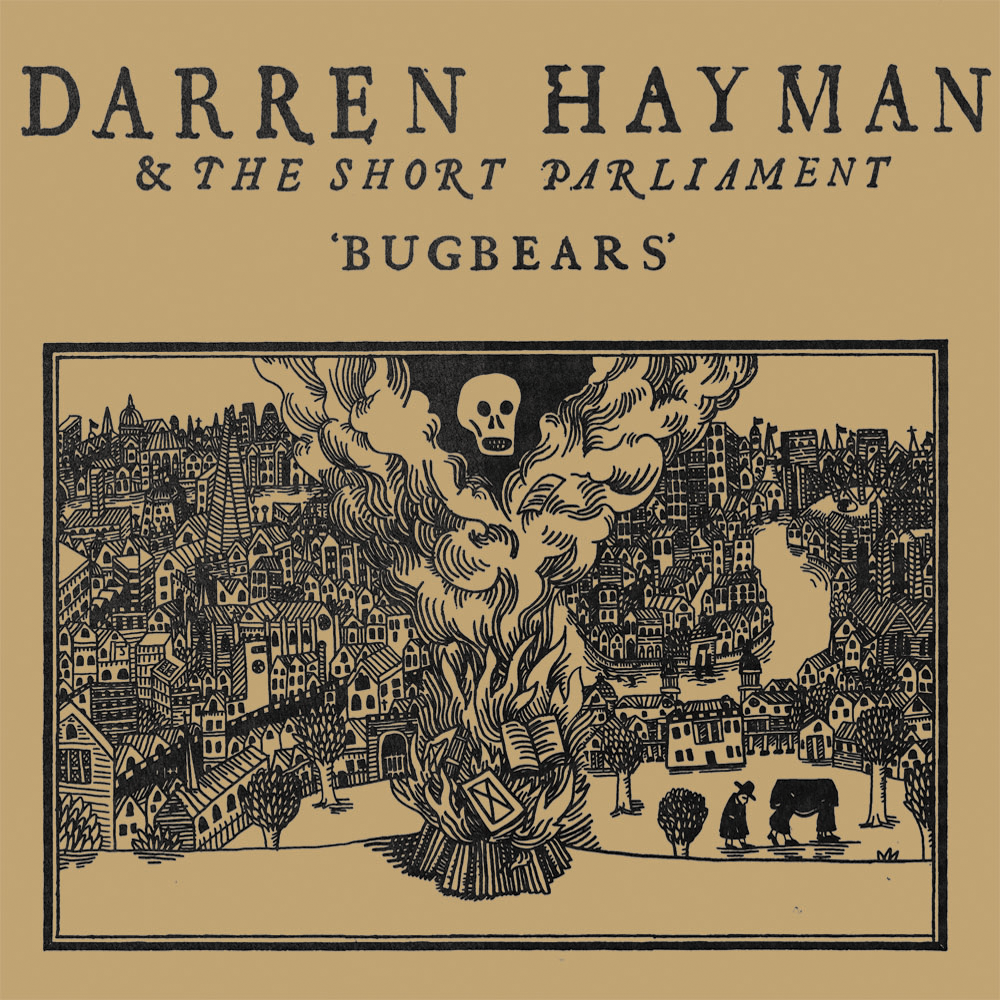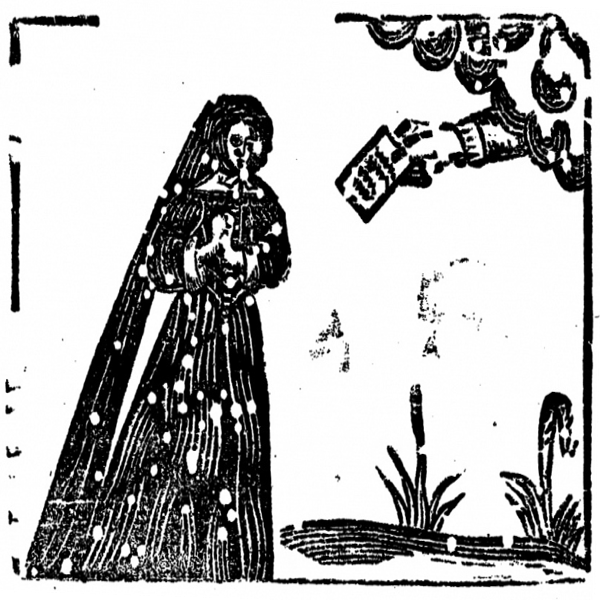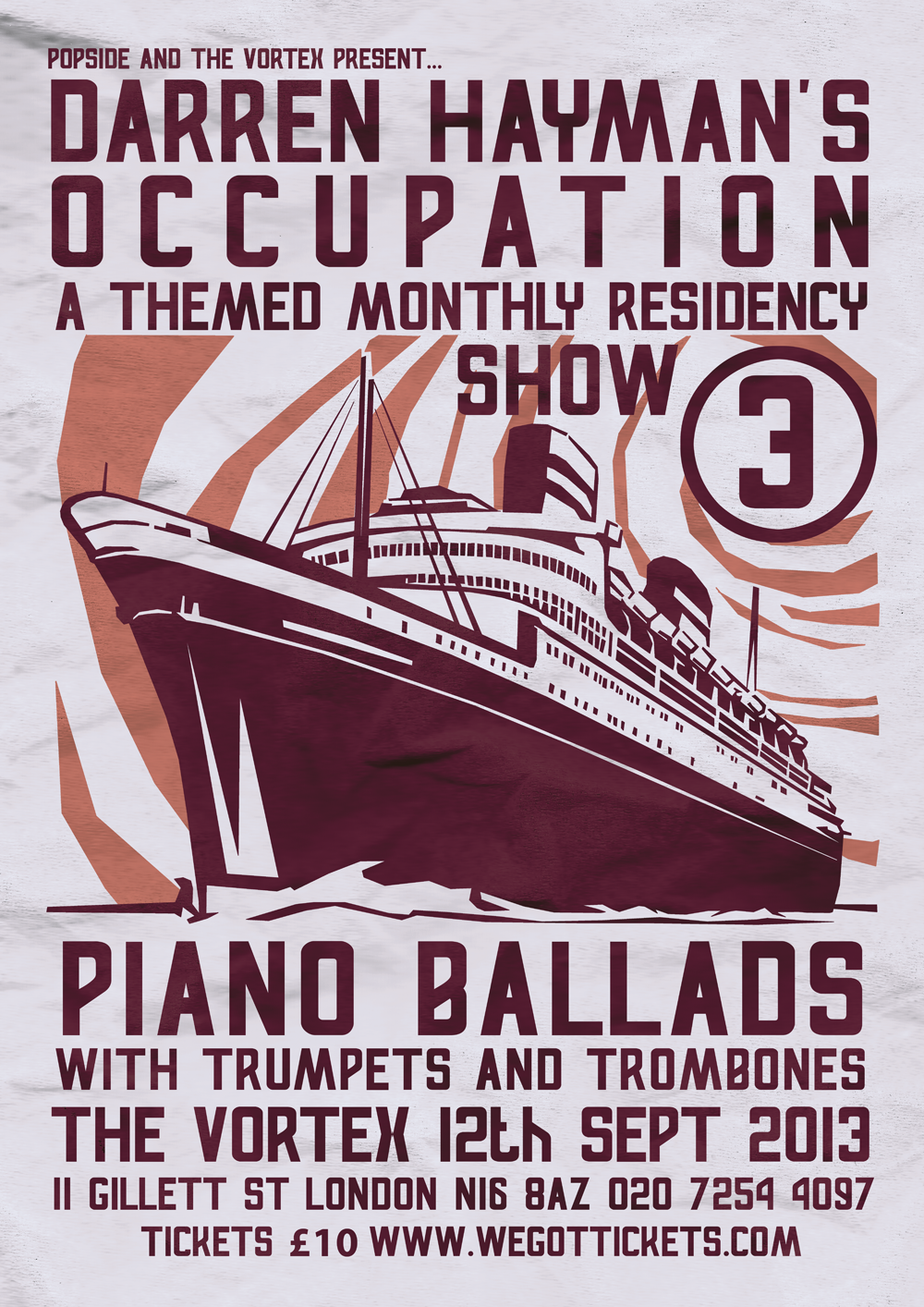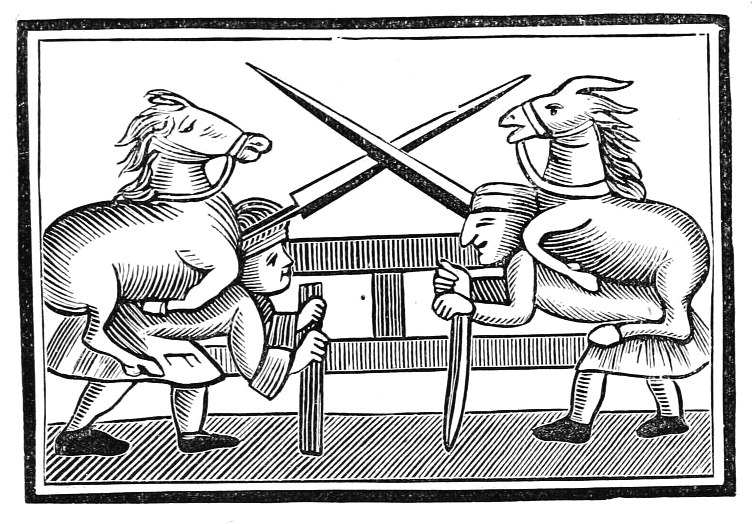Author: darren
Bugbears

| 1. | Martin Said | |||
|
2.
|
Bugbears
|
|||
|
3.
|
Sir Thomas Fairfax March
|
|||
|
4.
|
Seven Months Married
|
|||
|
5.
|
Hey Then Up We Go
|
|||
|
6.
|
The Owl
|
|||
|
7.
|
The Contented
|
|||
|
8.
|
Impossibilities
|
|||
|
9.
|
Babylon Has Fallen
|
|||
|
10.
|
I Live Not Where I Love
|
|||
|
11.
|
Bold Astrolger
|
|||
|
12.
|
Old England Grown New
|
|||
|
13.
|
When The King Enjoys His Own Again
|
about
An album of songs from the English Civil Wars and seventeenth century to accompany The Violence.
I recently made an album called ‘The Violence’. It concerns itself with the East Anglian witch trials during the English Civil Wars. During my research I started to come across folk songs of the seventeenth century and Stuart era. Two such songs appear on that album: ‘When the King Enjoys His Own Again’ and ‘A Coffin for King Charles, A Crown for Cromwell and a Pit for the People’.
I didn’t seek to achieve forensic detail when finding these songs, but was keen to have a sense of the flavour of the music of the era. As a side project to the album, I started to record and adapt some of the songs, and now they are collected here.
Consider this an accompanying volume to The Violence, a scene setter, a spin off.
Although I did a fair amount of research, these are not meant to be definitive or historical readings of the songs. I have revised, edited and even rewritten in places.
Thanks to Malcolm Taylor and the library at Cecil Sharp House, and the English Folk Dance and Song Society.
Darren Hayman, February 2013.
credits
The Short Parliament are
Bill Botting
Dan Mayfield
Dave Watkins
David Tattersall
Johny Lamb
Order Bugbears on CD (PRICE INCLUDES POSTAGE AND PACKING)
Gatefold litho printed brown card sleeved complete with 16 page booklet of illustrations, lyrics and Darren’s research notes.
Pre-order Bugbears on Heavyweight 12″ vinyl
(PRICE INCLUDES POSTAGE AND PACKING)
Pressed on 180gsm heavyweight black vinyl, nestled within a luxury polylined sleeve and coming complete with a full 16 page booklet of lyrics and Darren’s research into the songs, the poems and the events that inspired the music of the time. Each song comes illustrated by a different graphic artist, including Pam Berry, Robert Rotifer, James Paterson, Rose Robbins, Frances Castle, Joe Besford, Jonny Helm, Sarah Lippett, Dan Willson and more…
The Lamenting Lady by Angela McShane (plus exclusive new Hayman recording)

One of the many things I really like about the Violence and Bugbears albums is that as well as the sound of the songs, we get words and pictures, even for the instrumental pieces!
In the seventeenth century too, if you bought a song you had heard and liked from a singer – perhaps in the street, at a market or in an alehouse or tavern – you would buy the words and pictures, printed on one side of a single sheet (known as a broadside ballad), and put it in your song collection. For example, Anthony Wood, in later life a scholar at Oxford University, began his ballad collection – of more than four hundred songs – as a young boy of 8 years old.
Incredibly, four hundred years later, ten thousand of these flimsy single-sheet songs still exist thanks to collectors like Anthony Wood. Many have been made freely available on the web by Oxford University: http://bodley24.bodley.ox.ac.uk/cgibin/acwwweng/maske.pl?db=ballads
And the University of California, Santa Barbara
I’ve been studying these songs for a long time now – in particular what we might today call ‘politopop’ – topical songs that tried to make political or religious messages. Interestingly, not only the Cavaliers used songs to get their points across. Puritans too had a way with words and music and merry morality was being sung in the towns and cities of Old England. Many broadside ballads supported parliamentarians and even Cromwell and his armies in the 1640s and 50s.
But Cavaliers won the war, and so they got to dictate the tune of history ever after. Today, the songs that are best remembered are the royalist ones – only historians like me know about the Puritan ones – while evidence shows that many ‘puritan’ songs were destroyed by their collectors after the King returned – perhaps because they were afraid that their loyalty would be questioned.
One of the longest lasting royalist songs was not in fact ‘When the King Enjoys is own again’ – though this was a popular tune. It was a song lamenting the death of Princess Elizabeth Stuart (b. 1635), sister to Charles II, in 1650, just a year after her father the King’s execution by Parliamentarian forces.
Though placed under house arrest throughout the period of the civil wars, Elizabeth was well-known as a stalwart supporter of the royalist cause and famously wrote an account of Charles I’s last meeting with his children. Among the gifts he distributed, he gave his young daughter a Bible.
Elizabeth proved a thorn in the side of Parliament, vigorously complaining about the treatment and housing she and her brothers endured. Parliament tried to break her spirit not only by moving her around but also by condemning her and her youngest brother to listen to two sermons a day. This, however, was just what she liked! Poems were published celebrating her pious scholarship and knowledge of languages, including Greek and Hebrew.
Her final move to the Isle of Wight when she was unwell proved fatal. She died just as, in London, Parliament finally agreed to let her go abroad to join her mother. She was buried in a tomb unmarked except for the initials E. S.
Almost immediately, a broadside ballad was published, entitled The Lamenting Ladies Last Farewell. This song immortalised the sad fate of this young royalist martyr.

Incredibly popular, it ran to at least six editions that same year (at least three thousand sheets). Anthony Wood’s edition was ‘signed’ with the same initials that were carved on her simple tomb ‘E.S.’.

Parliament did nothing to stop it.
Lamenting Lady’s Last Farewell to the World by Darren Hayman
(‘Lamenting Lady’ recorded by Darren Hayman)
Princess Elizabeth’s song and story continued to be popular after her brother returned, with two more editions in the 1680s and three more in the eighteenth century. By then the song came with a new woodcut image – one that portrayed the captive scholar princess with her father’s Bible.
This image continued to be influential in portraits through to the nineteenth century, at which point Queen Victoria decided that her young ancestor should be given a proper tomb in keeping with her status. Perhaps influenced by our ballad in some way, she commissioned an effigy that depicted the young princess asleep in death, with her head on her father’s book.
http://supremacyandsurvival.blogspot.co.uk/2011_12_01_archive.html
Angela McShane http://rca.academia.edu/AngelaMcShane
Record Collector Review of Bugbears
Review for Bugbears in Uncut magazine
The Pleasing Crisis of a Noun by Johny Lamb
There are several ways of approaching the noun ‘folk’, and we use it carelessly and variously. We use it with prefix when it strays too far from its perceived meaning (alt, new, weird etc), and we’ll add things to the end when it gets even further away from us (-tronica, or just -ie or -y). This aside, there are perhaps two useful routes into the noun. One being that music of unknown authorship, passed on aurally through the generations, or at least that music that survived the scrupulous moral agency of Cecil Sharp and his contemporaries, and the other, best described as a vernacular or popular music that voices the identity of a community (contemporary or otherwise). These two approaches might well contain each other, or be some way distant.
Mostly, I suppose, that what we call folk is music that sounds like folk. For the most part this works for us, but when presented with a project such as Darren’s here, we are forced to acknowledge, and to some degree reconcile the chasms of ideological, aesthetic, technical and methodological difference between various contemporary practices. And even in writing that sentence, my use of ‘us’ and ‘we’ in this text so far suddenly becomes problematic. Who is this ‘we’? Or to put it rather better by using the words of poet John Hall, ‘Who are you a we with?’ Indeed, who am I, or is Darren, a we with? ‘Bugbears’ is an album of traditional songs, but then so is ‘Broadside’ by Bellowhead, and yet, the two are not siblings. Likewise, Darren is at once doing the same thing and not the same thing as Jackie Oates. The difference, I think, lies in re/deconstruction and appropriation. It also lies in a variable take on the idea of authenticity. And thus, ultimately, the cultural resonance of any practitioner of folk music comes down to the generation and reception of meaning.
In the circles that encompass Bellowhead, Oates et al, there is much talk of authenticity, and it seems that instrumentation, arrangement, language, voice and repertoire play a big part (Bellowhead’s incongruous brass players notwithstanding). The voice is of particular interest here, where delivery will often take on the form of a regionless, quasi-pastoral timbre and ‘accent’, which you will also find rife in the singers on historical dramas from the television (think of Sharpe’s Daniel Hagman, or someone taking up a song at the end of an episode of Larkrise to Candleford). Technique and ornamentation play a large role here (instrumentally as well as in the voice). Production for these kinds of traditional players plays to those notions of transparency that manufacturers of recording equipment have been promising for decades. Things are clean and allow us to bathe in the skill, dexterity and knowledge of the players. The set of more problematic performers that might include Darren seem to understand and embrace the idea that recording, production and fidelity have compositional value in and of themselves. Furthermore, the voice is unaffected (or in the case of Birdengine, is grossly caricatured). There is an acknowledgement of historical gap, and a process of deconstruction that seems to seek a recontextualisation for this material. The appropriation of traditional song often takes an allegorical purpose, and arrangements are not faithful, nor scored within ‘the tradition’. The priorities are within different camps.
For some, authenticity might lie within knowledge of the repertoire, technique of delivery and a puritanical approach to arrangement, and for some (including me), it might lie in the acknowledgement that in this instance, there is no tangible authenticity for a living practitioner appropriating this material (in terms of its literal articulation). It is perhaps, only in acknowledging a distinct inauthenticity that we can start to ignore the term and at least do something sincere. I think the majority of traditional players, would have to concede that they have little common ground with a peasant class of community-based musician (and what community anyway?). But these things in either case, while problematizing authenticity, do not in any way effect integrity, which can be approached in terms of virtuosity or in terms of atavism, or indeed, in terms of a wilful and postmodern transhistoricism. This would become a debate of considerable length were I to introduce the idea of original song here, but fortunately for all concerned, that is not the case.
The unfixed meaning of the word folk is at once a strange thing, but also arguably a good thing. Artwork has a number of these collapsed nouns, like lyric, ballad, performance, and installation to name just four, and this allows considerable scope for interpretation. Baring in mind that of course, between and beyond the two approaches I have written about here, exists a countless number of alternative methods and histories, all of which, enticingly remain in flux. Furthermore, lest we forget, those surviving songs so variously reproduced remain, at least in part, because they are beautiful, and those significant themes like love, death, drink, fear, war and so on, continue to be of relevance beyond any tawdry argument of authenticity. It is when musicians recognise this and appropriate traditional songs, in whatever form they begin to take, that something new and something exciting can happen. At this point, the generation and reception of meaning that I mentioned earlier, becomes the focal point, and whatever aesthetic or ideological camp one falls into, surely that is a good thing?
Johny Lamb is 30 Pounds of Bone
The Permanent Way – Video
http://vimeo.com/69167067/settings
Video made using Vine app, iPhone and iPad.
MOJO review of Bugbears

Occupation Show 3

The Vortex has seating at the front and standing at the back, seating will be allocated based on the order tickets are sold and reserved for you when you arrive.
If the number of tickets remaining above shows fewer than 25 we cannot guarantee you will get a seat.
http://www.wegottickets.com/event/228613
Popside and The Vortex Present…
Darren Hayman’s Occupation
Show Three – Piano Ballads with Trumpets & Trombones
Thursday 12th September 2013 The Vortex
“The third Occupation show is themed around piano ballads. The majority of the songs will be taken my album The Ship’s Piano but I will also be visiting other softer moments from my back catalogue, including some rarely played Hefner songs.
I will be accompanied by a small Jazz combo including Steve Pretty on trumpet.
My desire to do these Vortex shows came out of my love of the more esoteric regions of jazz and a longing to experiment and stretch out on stage. With that in mind I am delighted to announce that the support for this show comes from Gail Brand and Mark Sanders.
Gail and Mark play free improv music on trombone and drums. A beautiful, courageous sound which I hope will come to mean even a fraction to you as it does to me.
Here is Stewart Lee introducing their music on the BBC
I hope also to collaborate with Gail and Mark on a new piece on the night.
I hope you can come.”
Tickets are £10 and seating is limited so book early to guarantee yourself a spot and ticket holders will get a poster designed by Darren for each show.
Darren Hayman’s Occupation is a series of shows on the second Thursday of the month at The Vortex, Dalston. There will be a mix of sets showcasing different albums, themes and special guests. This is not your standard indie gig:
“I love gigs. I hate gigs.
I want to play live and I love what shows can be, but I’ve found myself frequently stifled by the limitations of my career. I can’t play the plush, seated venues and I can’t experiment with a string section or play 20 minute opuses.
My music was born in the sticky floored rock venue. I like the sticky floored rock venue but I have had a hankering for something different recently. My own taste has veered towards free improv and jazz and although it’s hard to imagine that music influencing my own I do love the culture of live music in this genre.
Long sets, sometimes two, comfortable venues and a reverence and respect for the event and the moment; less talking, less cameras, more dynamics, less microphones.
I wondered if these would let an indie rock interloper amongst their ranks. My show at the Vortex back in last November was successful enough to make me think of playing a monthly residency there.
The idea is that each show is themed. I don’t want to go the whole predictable route of playing complete albums, but rather group, types of songs together for different evenings. Experiment, sometimes play two sets, sometimes have unlikely guests. I will be playing with members of my bands from through out my career as well as old friends like the Wave Pictures and Allo Darlin.
The Vortex is a beautiful venue. I’m trying to do something different; something, smaller, prettier. I hope you can come.”
The Vortex
11 Gillett Square, London N16 8AZ
www.vortexjazz.co.uk
Doors 8pm
£10 Adv
The World Turned Upside Down

When playing the song Impossible Times from the Violence live, I have been introducing it with a speech about how every age views itself as the nadir of history. That things have never been as bad as they have in the present.
During the English Civil Wars in the seventeenth century this manifested itself as the idea of ‘The World Turned Upside Down’. On my collection of Bugbears this is illustrated in the song ‘Impossibilities’ a list of incongruities and …well impossibilities.
Here are some woodcuts from the era via The New Inquiry.
Original article here
The World Turned Upside Down
By THE PUBLIC DOMAIN REVIEW
The Public Domain Review is an online journal and not-for-profit project dedicated to showcasing the most interesting and unusual out-of-copyright works available on the web. You can explore our curated collections of curiosities and our fortnightly articles from leading scholars, writers, and artists at publicdomainreview.org

A series of woodcuts from an 18th century chapbook entitled The World Turned Upside Down or The Folly of Man, Exemplified in Twelve Comical Relations upon Uncommon Subjects. As well as the amusing woodcuts showing various reversals (many revolving around the inversion of animal and human relations) there is also included a poem on the topic. The chapbook is reproduced in the wonderful Chapbooks of the Eighteenth Century (1882) edited by John Ashton, which brings together hundreds of facsimiles of 18th century chapbooks upon a huge range of subjects. All images are from the book housed at the Internet Archive, donated by University of Pittsburgh Library System. Click images to enlarge.
No title
Not Title
The ox turned farmer
Old Soldier Turned Nurse
The mad squire and his fatal hunting

The reward of roguery – or the roasted cook

The sun, moon, stars, and earth transposed

The water wonder or the fishes lords of the creation

The horse turned groom
The Honest Ass and the Miller

Gallantry – a la mode – or the lovers catched by the bird
The Ox Turned Butcher













